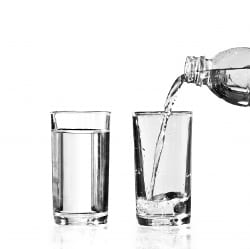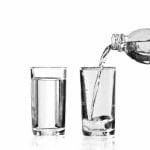Fortunately plenty of options exist for consumers who want to change the quality of their water supply without harming the environment. One of the more common methods of water filtration is through the use of activated carbon filters.
Which contaminants are removed with activated carbon (AC) filters?
Organic substances are composed of two basic elements: hydrogen and carbon. Because organic compounds and chemicals are normally responsible for the taste, color and odor of tap water, AC filtration can be an effective way to improve it. In fact, this method is recognized by the Water Quality Association as an acceptable method of reducing certain contaminants to within the EPA’s National Drinking Water Standards.
The dangers of THMs
Some of the organic chemicals that can be harmful in higher quantities include: trihalomethanes (THM), industrial solvents, pesticides, polychlorinated biphenyls (PCBs) and polycyclic aromatic hydrocarbons. THM is a byproduct of the chlorination process that is used to disinfect most public drinking water, but the most concerning type of THM is chloroform. EPA standards dictate that public drinking water systems cannot have more than 100 parts per billion of THMs in treated water, but some municipalities have difficulty maintaining this standard.
Because the EPA’s Safe Drinking Water standards only regulate community drinking water systems, contamination is more likely to go undetected in private water systems. In this case, AC filtration may be a viable alternative to protect the health and well-being of households in rural areas. In addition to organic chemicals, AC filtration can also remove radon gas from drinking water.
Which water contaminants are not removed through AC filtration?
Carbon filtration does nothing to remove microbes, sodium, nitrates, fluoride and hardness from water. Lead and other heavy metals can only be removed with a very specific type of activated carbon filter. Unless the manufacturer states that its product will remove heavy metals, the consumer should assume that the AC filter is not effective in removing them.
Benefits of POU Bottle-less Water Coolers
Two of the biggest complaints about buying filtered water are eliminated with a point-of-use (POU) water filtration system. One is the environmental waste that is created by endless piles of empty water bottles, and the resulting greenhouse gases from transporting bottled water around the country. Another is the need to purchase replacement water from an outside supplier.
Because a POU water cooler uses the existing water supply at your home or office, the only replaceable part is the filter. POU water filtration systems are available for purchase or lease from many sources. Many of these systems include dual-carbon filtration as well as special filters that remove contaminants, as well as heavy metals. Once people use this type of filtration system, they rarely ever go back to bottled purified water. In fact, many will opt to install this type of system in their home and office.
Testing your tap water
Whether your water comes from a municipal source or well, regular testing is always recommended. Many contaminants are not readily detected by the taste, color or smell. Only a reputable or certified laboratory can tell you for sure if the water has high quantities of known contaminants. Remember, there are thousands of substances that could possibly contaminate your water and they each have a slightly different chemical behavior. Once you receive the laboratory results, be sure you understand the numbers and don’t be afraid to ask questions. Understanding the test results will help you choose the best and most economical water treatment system for your home or business. The system you choose will depend on the type of contaminants currently present in your tap water.
Photo Courtesy of FreeDigitalPhotos.net





